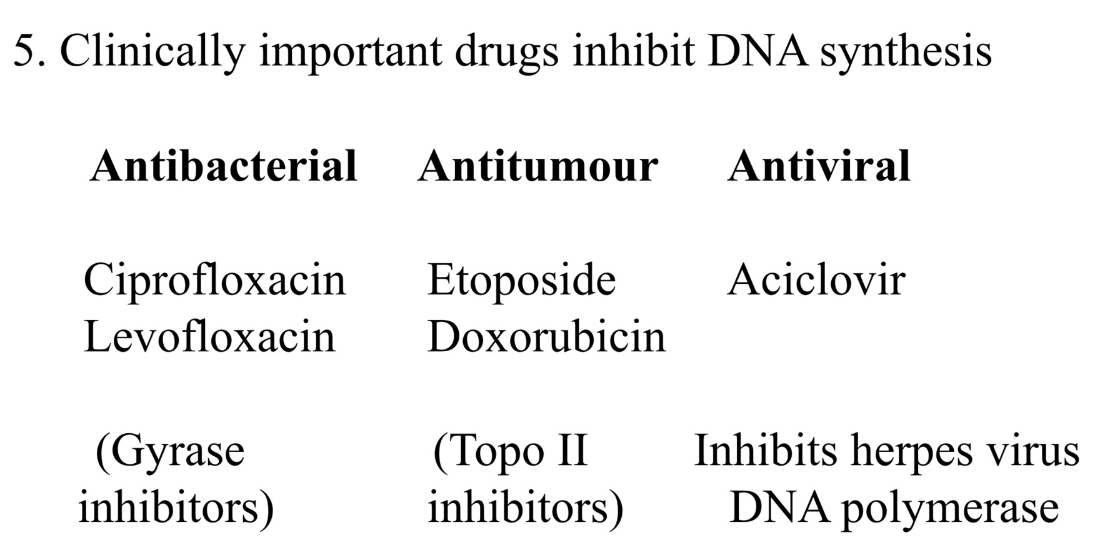State some information about DNA
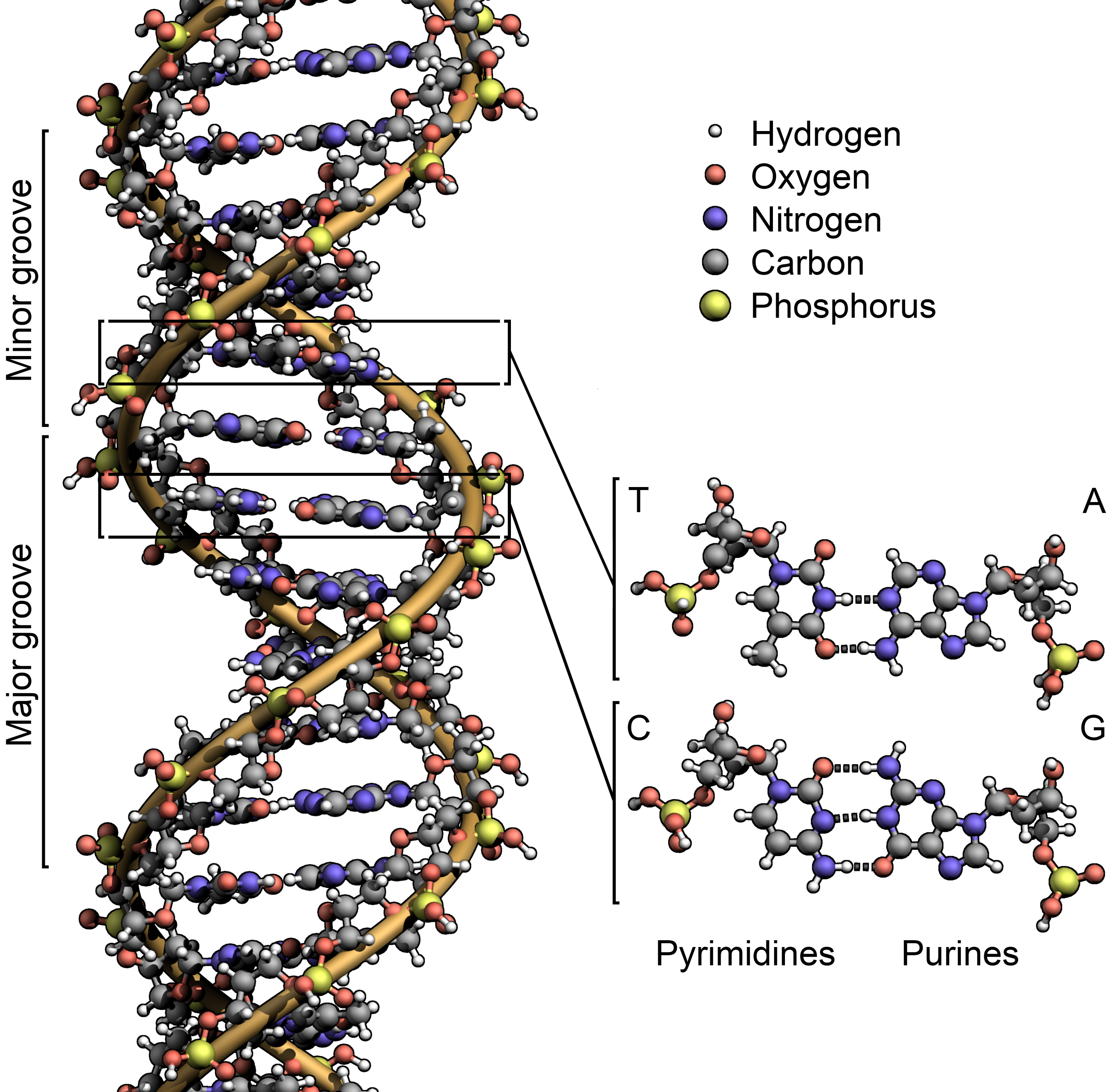
• Store of genetic information.
• Double helix has complementary polynucleotide chains, forming minor and major grooves
• ‘DNA makes RNA makes protein’
• Cellular DNA is supercoiled in vivo
• DNA damage is detected and repaired.
Unusual DNA structures include what?
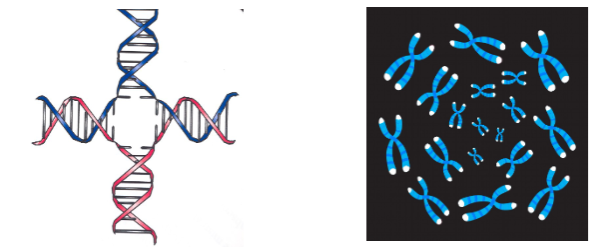
-Holliday junctions occur in living cells through DNA strand exchange between two homologous chromosomes- red and blue duplexes above which are important in DNA repair.
-3- and 4-stranded DNA helices formed in the Guanine-rich sequences of telomeres, they protect chromosome ends.
The four levels of DNA structure:
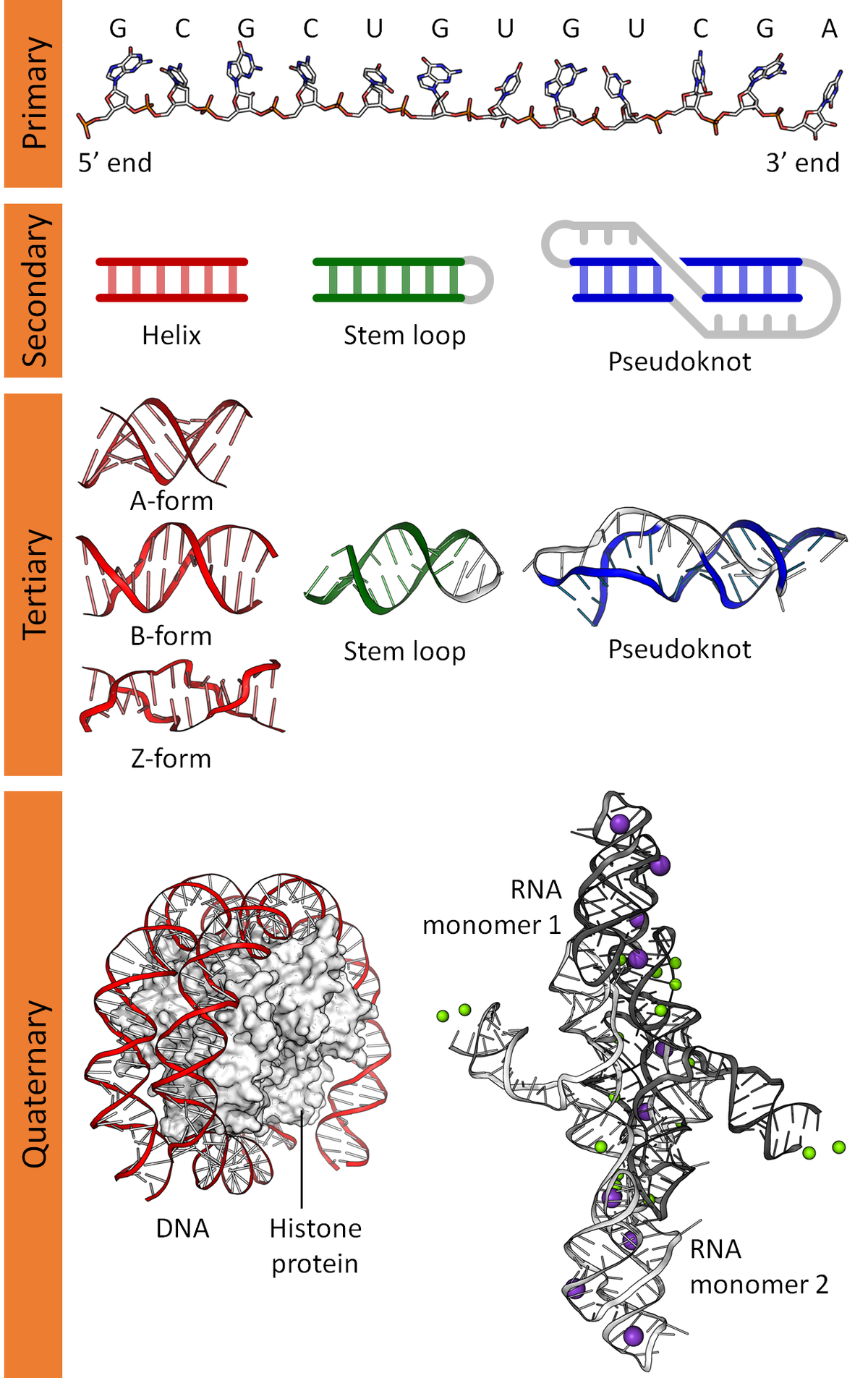
•Primary-sequence of bases (DNA sequencing)
• Secondary-helical structure (X-ray and chemistry)A, B, Z-DNA, 3- and 4-stranded DNA Holliday junctions, hairpin loops
• Tertiary-DNA supercoiling (Electron microscopy)
• Quaternary- interlocked chromosomes; DNA complexed with proteins in chromatin
State some information about bacterial DNA:
• E. coli DNA is circular and comprises ~5 x 10^6 base pairs
• Is supercoiled- the DNA ribbon is itself twisted in space
• Supercoiling caused by the enzyme DNA gyrase
Bacterial DNA coiling picture:
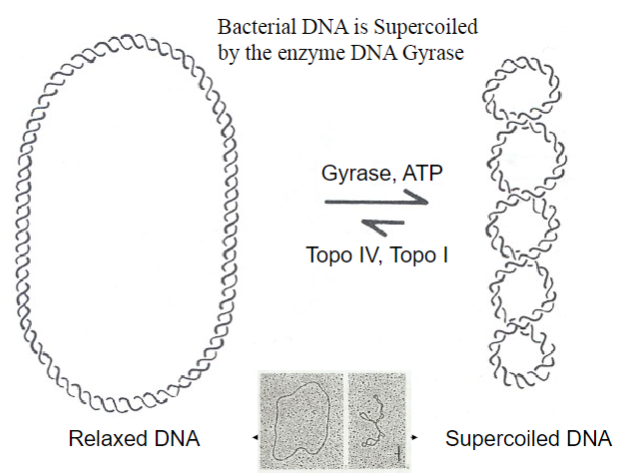
How many base pairs do humans have?
3 million
DNA is complexed with histones and other proteins to form a nucleoprotein complex...... which is called?
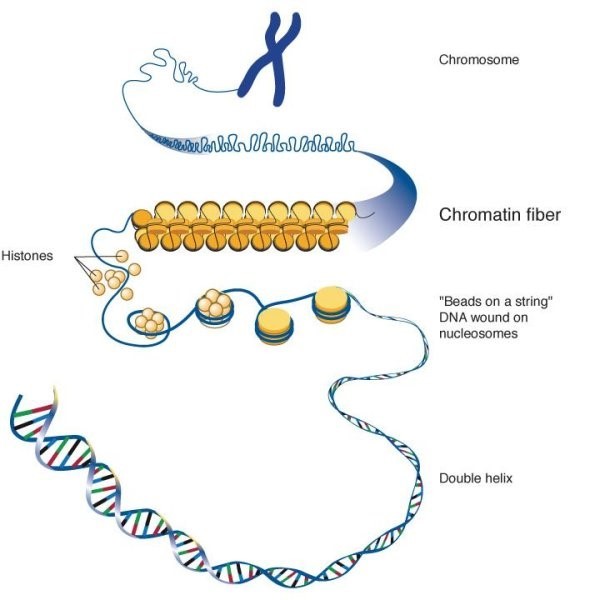
Chromatin
What is the basic building block of chromatin?

Nucleosomes
Is DNA chemically stable? Why?
NO
-DNA is chemically unstable.
-Bases can be lost or altered (C ⇾ U)by hydrolysis, resulting in abasic sites or mutations
-Chemicals and free radicals (generated by oxidative metabolism)can change base structure and base pairing.
+Note also cyclophosphamide(DNA alkylating agent) and intercalators such as doxorubicin(inserts between bases) are widely used as anticancer drugs)
-Radiation can damage DNA:-UV light produces thymine dimers and melanoma; ionising radiation(X-rays, gamma rays) can break DNA chromosomes → leukaemia
Have cells evolved to combat DNA Damage? Elaborate on your reasoning
-Fortunately, cells have evolved repair systems to detect and correct DNA damage and thereby maintain genome stability.
-Repair is important; Patients with inherited defects in repair proteins are cancer-prone. They can develop early onset cancers of the skin, breast, colon etc.
What are the 3 general steps of DNA synthesis?
1. The DNA helix facilitates DNA replication
2. Replication origins and the cell cycle
3. Replicative DNA polymerases catalyse leading and lagging strand synthesis in a multienzyme process
The DNA helix facilitates DNA replication; How?
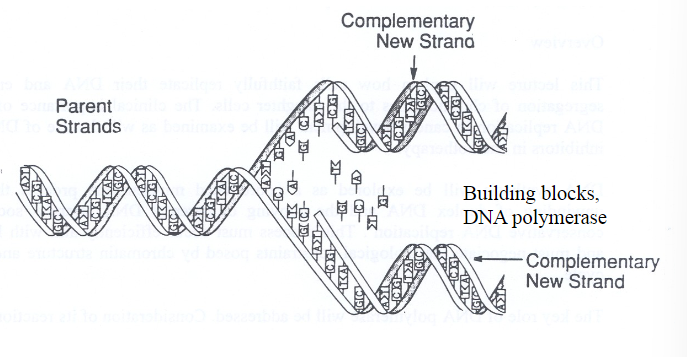
• Two antiparallel* polynucleotide chains form a RH helix,
• One strand is complementary in sequence to the other 5′...AGCTACG...3′ (*strands are antiparallel) 3′...TCGATGC...5′
•Thus, copying each strand generates two daughter duplexes
•Replication is conservative
How do cells initiate DNA replication and complete it within the cell cycle? (4)
-DNA replication is initiated at specific sites on DNA called replication origins
-Replication origins are recognised by an initiation complex
-DNA at the origin unwinds to form a replication bubble and allow access to the replication machinery
-DNA synthesis occurs in a specific phase (S) of the cell cycle and involves complete unwinding of the parental DNA
How many replication origins does bacterial DNA and Eukaryotic DNA have?
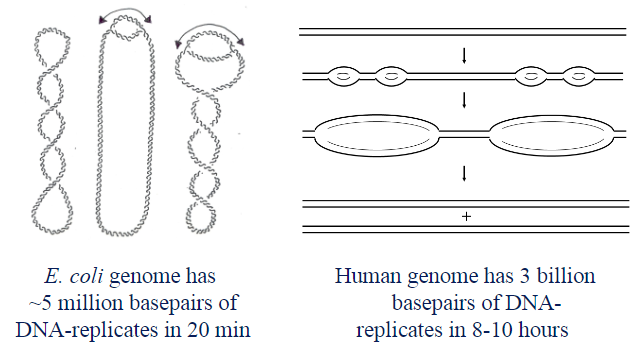
Bacteria DNA replication initiates from a single origin:eukaryotes use multiple origins
What are the different DNA polymerases and what do they do? (Leading and lagging strand synthesis) (3)
(Important to know that cells express multiple DNA polymerases, each with a dedicated role)
-Replicative DNA polymerases- synthesise bulk of cellular DNA
-Repair DNA polymerases- involved in various repair systems correcting DNA lesions
-Translesion/bypass DNA polymerase-replicate past DNA lesions, allowing DNA synthesis to continue
How many different DNA polymerases do bacteria (e.coli) and eukaryotes have?
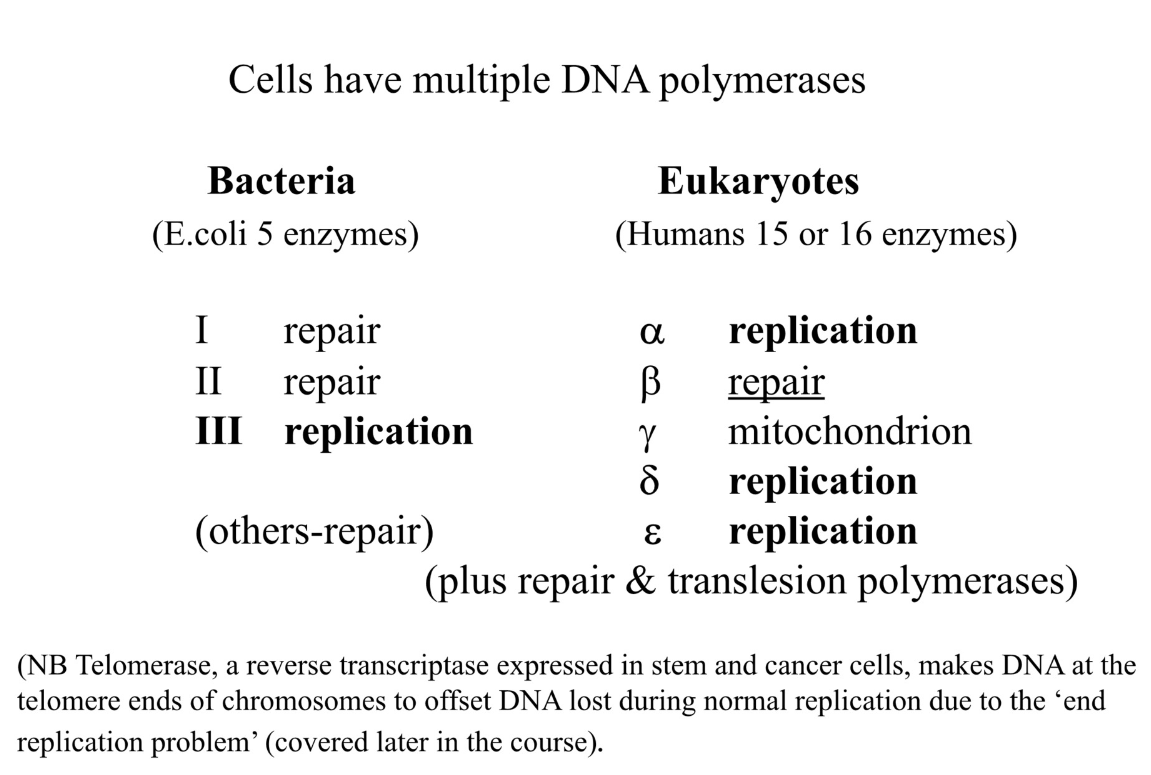
e.coli=5 human=15 or 16
What are the 4 key properties of DNA polymerase? (4)

1)Act in 5′ to 3′ direction-has important consequences.
2)Utilises A-T and C-G base pairing to synthesise new DNA strand.
3)Requires a DNA template, a DNA or RNA primer, the four Deoxyribonucleoside triphosphate (dNTP) building blocks and Mg2+ ions.
4)Has a proofreading/editing function
What are the building blocks of DNA?
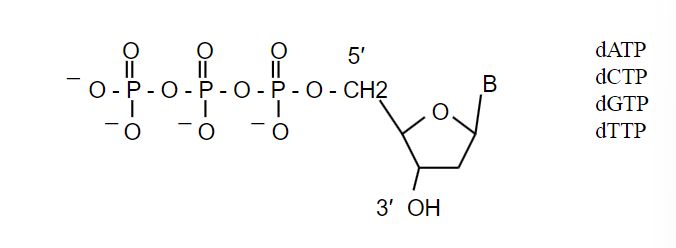
Deoxyribonucleoside triphosphates (dNTPs)
All known DNA polymerases, including replicative polymerases δ and ε add nucleotides to the 3′ OH end of the growing strand. Thus, DNA synthesis always proceeds in the 5′ to 3′ direction.
Does this cause a problem?
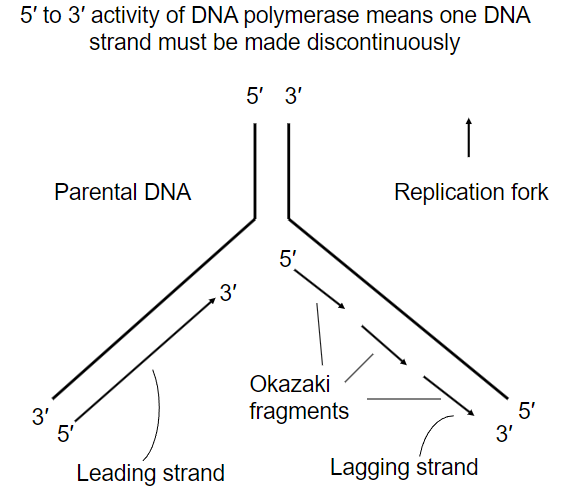
Kind of?
5′ to 3′ activity of DNA polymerase means one DNA strand must be made discontinuously, which leads to the creation of Okazaki fragments
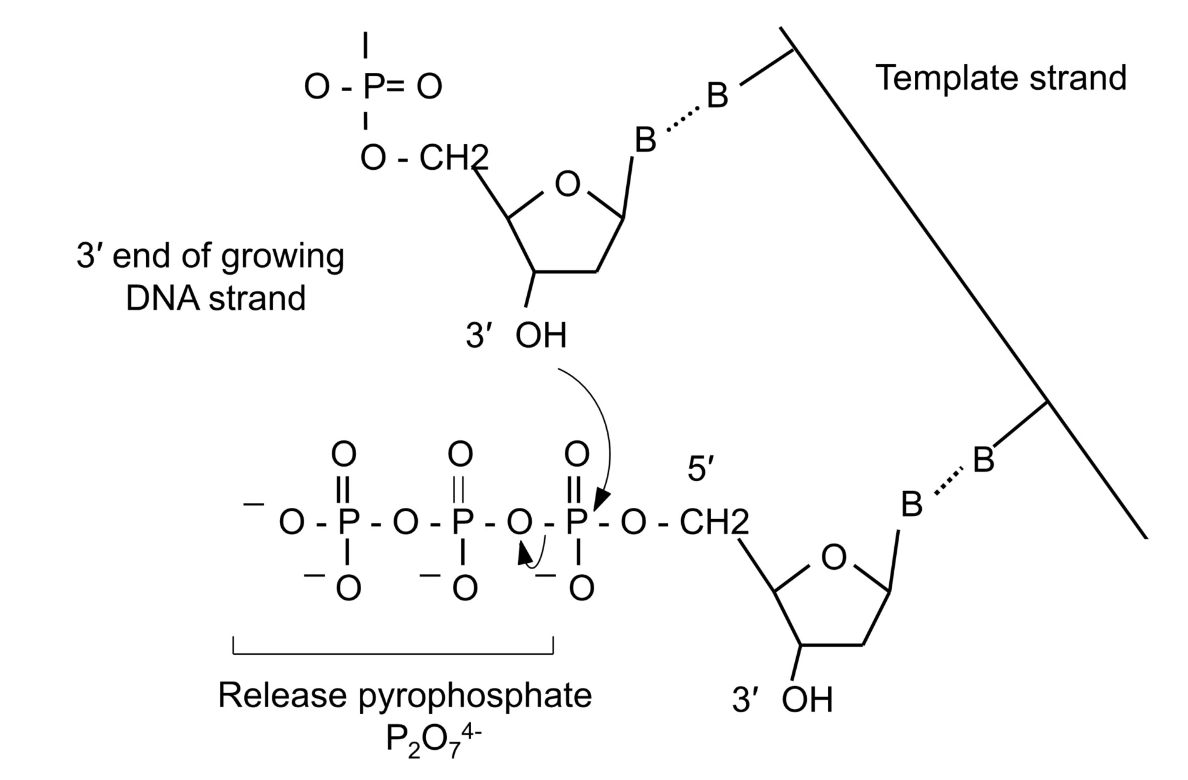
What occurs after this step?
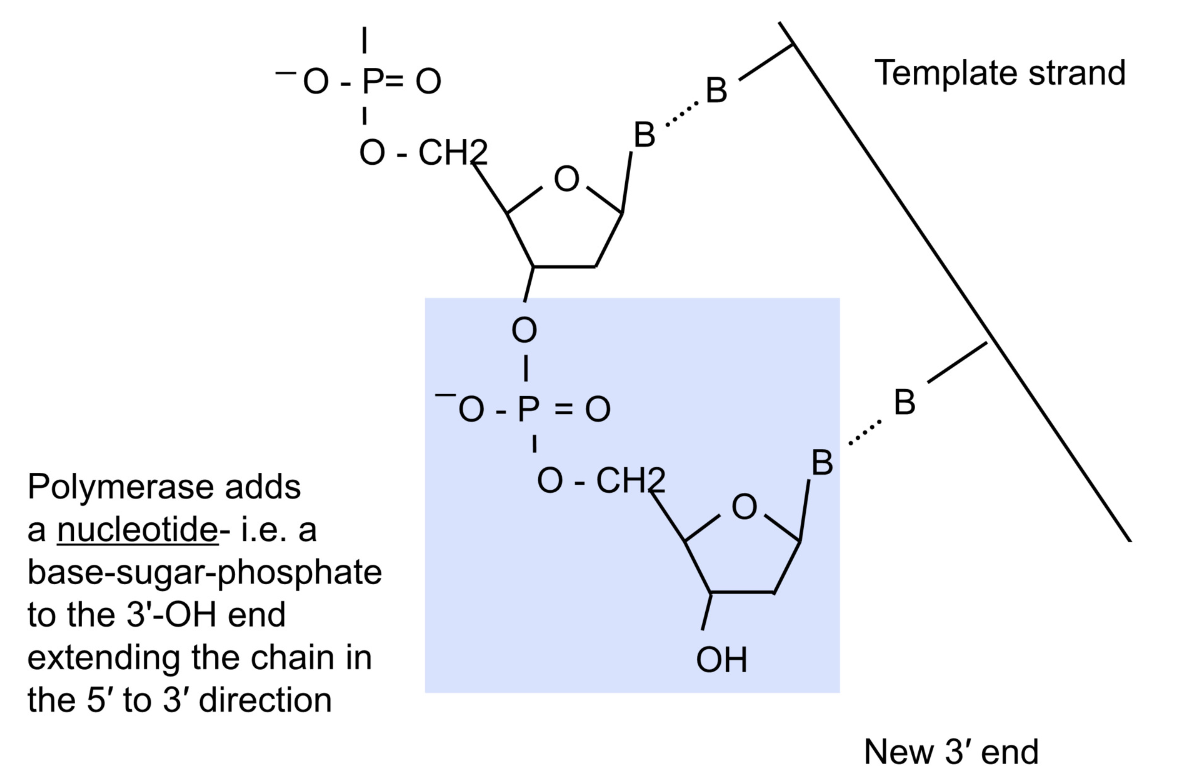
Picture outlining leading and lagging strand synthesis in a bit more detail:
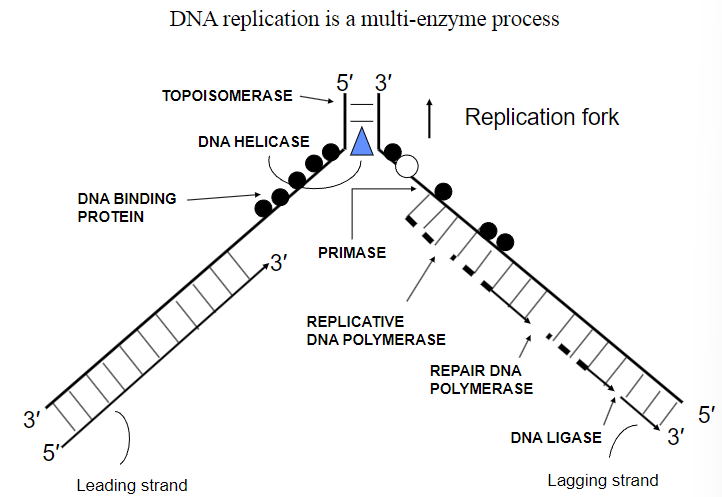
What do Topoisomerases do?
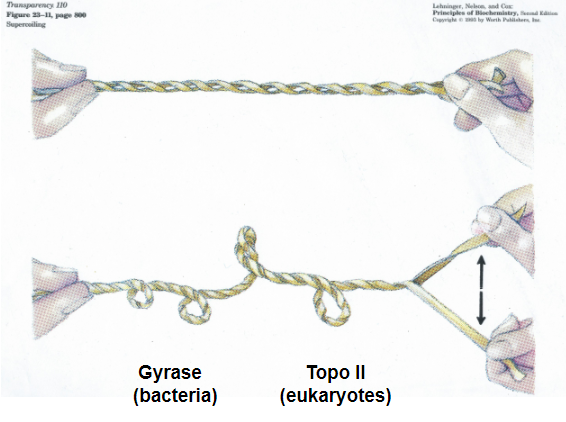
Topoisomerases remove +ve DNA supercoils ahead of DNA replication forks-which solves the ‘DNA winding problem'
DNA synthesis occurs with high fidelity-Why?
Human cells must replicate 3 x 10^9 base pairs of DNA in their lifetime
DNA replication error in vivo is ~1 in 10^10 bases. Why so low? (2)
Two factors:
1. Due to base pairing and enzyme proofreading/editing
2. Mismatch repair system-corrects most of remaining polymerases errors. Important multienzyme repair system.
(i) Highly conserved across species from bacteria to man
(ii) inherited defects in mismatch repair genes result in mutator phenotype that predisposes to cancer, e.g. Lynch syndrome and bowel cancer.
Can you name some Clinically important drugs that inhibit DNA synthesis of bacteria, tumours and viruses?
